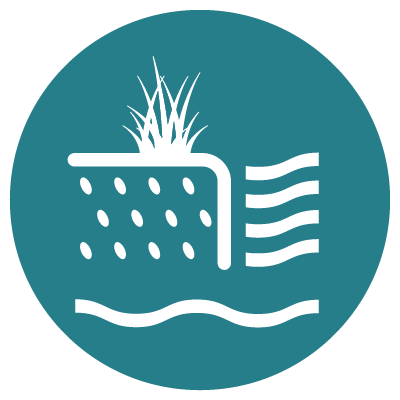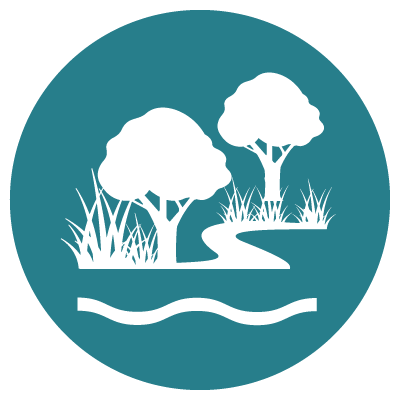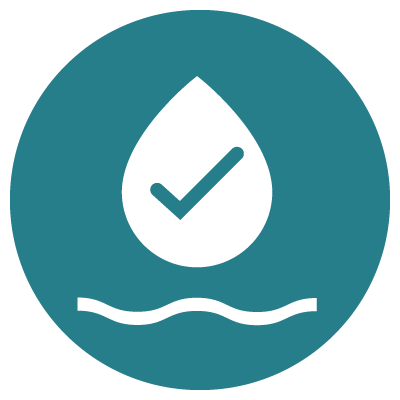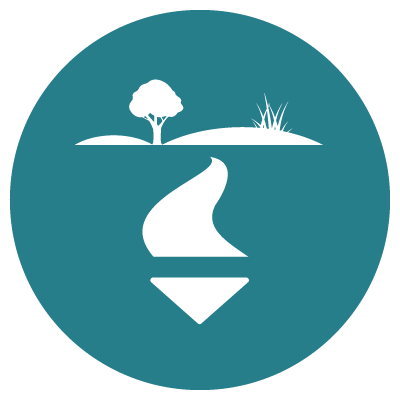Hearing frog calls reassures the community that waterways are healthy
Frogs play an important part in the food web as both prey and predator. They are strongly associated with temporary wetlands as the still or slow-flowing waters and moist conditions provide excellent foraging habitat for frogs.
Even though people may not know which species of frogs occur in their local areas, they generally consider the sound of frog-call to be a sign of a healthy waterway.
Frogs are measured through eDNA surveys and frog calls
Frog surveys will include a mix of listening for frog calls to identify the species present and sampling the water to detect presence through environmental DNA.
Recording of frog calls through Melbourne Water’s citizen science platform, Frog Census, is an efficient way to determine species’ presence at key breeding times (when frogs are calling). It’s also a great way to involve the community in surveillance monitoring of their local waterways. Additionally, targeted monitoring surveys to catch and release frogs or tadpoles are conducted for particular habitats and species. These targeted surveys allow us to gather data such as health and age to better understand overall population health and the relationship between the health of frog populations and their habitat conditions. Chytrid fungus is a key threat to our frogs and surveys can help us track the virulence and spread of this disease.
An emerging and complementary monitoring method for frogs is the use of environmental DNA (eDNA). Small traces of DNA from animals in the water (e.g. mucous, faeces, skin), can be analysed to identify species that are present. While eDNA has many advantages, it won’t completely replace the need for other survey methods since we will need targeted surveys to assess the health of individuals or to ascertain successful recruitment within populations.
Priority frog species
There are three threatened species of frog in the region; Growling Grass Frog, Southern Toadlet and Brown Toadlet.
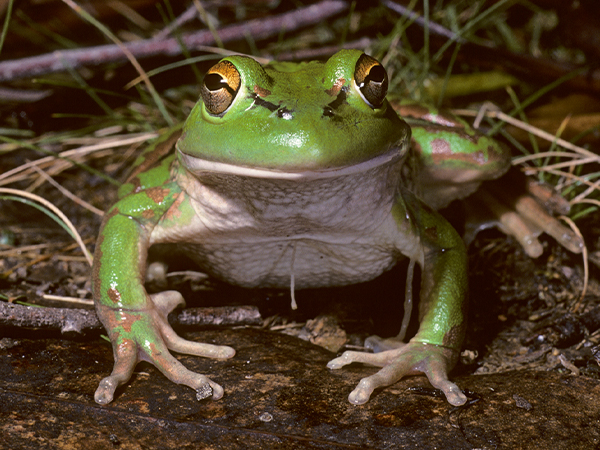
Growling Grass Frog (Litoria raniformis)
The Growling Grass Frog is a large, ground-dwelling “tree frog” that gets its name from the growling call it makes.
The Growling Grass Frog was once prolific in the region but is now classified as Vulnerable in Victoria and populations have declined significantly in recent decades.
It feeds on small prey, including other frogs, and needs large wetland habitat, with thick cover of floating aquatic vegetation to lay eggs and provide shelter from predators. Growling Grass Frog also need good water quality and use patches of bare ground and rocks for foraging.

Southern Toadlet (Pseudophryne semimarmorata)
The Southern Toadlet is a small, brown, ground-dwelling frog of our eastern areas.
Southern Toadlet populations are declining across the Melbourne region and are classified as Endangered.
Similar to the Brown Toadlet they breed in small hollows that fill with water temporarily and need to remain wet long enough for tadpoles to develop.
The Southern Toadlet can be quite poisonous to other animals since it is able to produce its own toxin as well as accumulate toxic compounds from its diet.
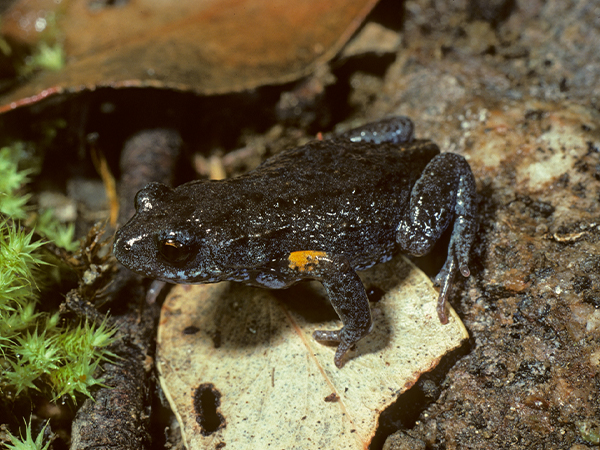
Brown Toadlet (Pseudophryne bibroni)
The Brown Toadlet, also known as Bibron’s Toadlet, is a small brownish coloured toadlet, only 2 to 3 cm long, most common in our north-western areas.
The Brown Toadlet is classified as Endangered in Victoria and has markedly declined in the Melbourne region over the past 20 years.
Brown Toadlets, unlike many other frog species in the region, breed in autumn, in shallow swales, or temporarily flooded depressions that are not usually recognisable as formal wetland habitat. They shelter in damp areas, under leaf litter, logs or other cover and lay their eggs in these damp places. Tadpoles are flushed into waterbodies after rain and localised flooding of low-lying areas, so water availability at the right time of year and duration is important.
Priority frog species sightings: 1960-2020
Growling Grass Frog Southern Toadlet Brown Toadlet
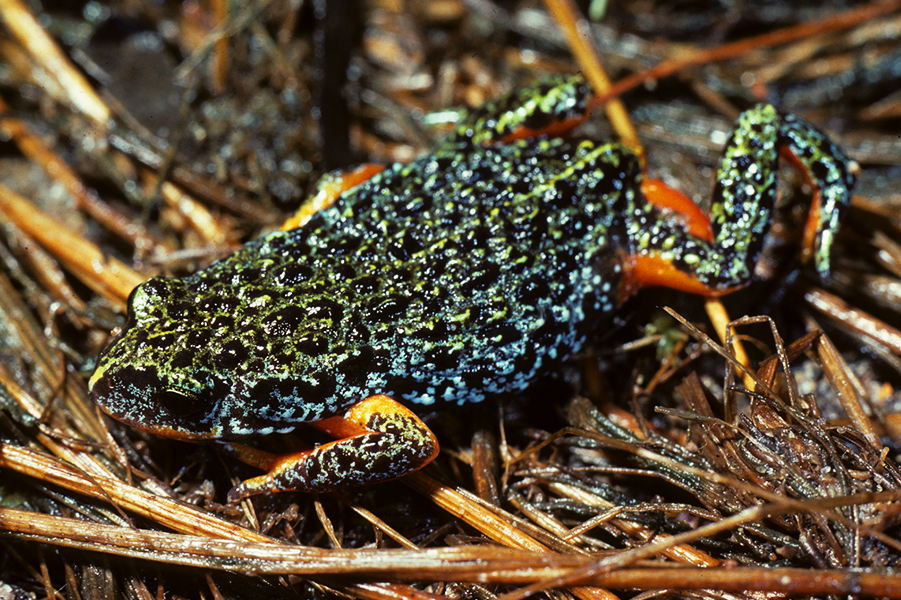
2020 Case study: Monitoring Southern Toadlet sites across Melbourne
Southern Toadlet populations are declining across the Melbourne region. A monitoring blitz was undertaken to provide greater certainty about where populations were still present so that greater effort can be made to protect, maintain and expand these.
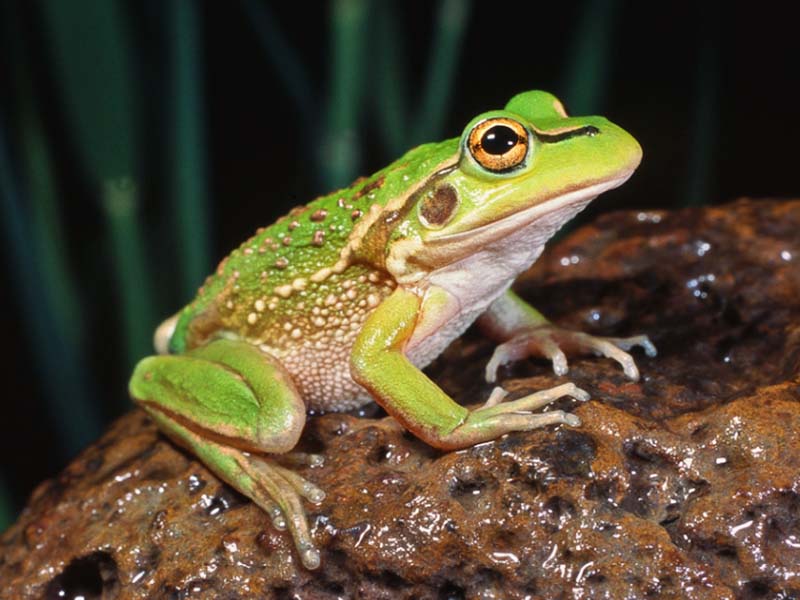
2021 Case study: Building high quality habitats for Growling Grass Frogs
It’s exciting to report that young Growling Grass Frogs are already being found in the first wetlands to be purpose-built for this iconic, endangered species.
Frog health baseline and long-term targets
2018 baseline: the frog condition from frog surveys and species richness models were used to determine the baseline condition of frogs.
2068 target: The target represents what can be achieved with an increase in coordinated, collaborative and prioritised effort to address managing vegetation, urban stormwater and pollution, and water regime.
Without additional effort, the condition of existing frog populations across the majority of the region’s waterways, wetlands and estuaries are expected to worsen as climate change and urbanisation continues.
Even with the existing effort and resources of waterway managers, agencies and community, it will be extremely difficult to maintain all the waterway values everywhere. This knowledge provides a definitive call to action, and confirms that aligned, increased and collaborative efforts will be needed over the next 10 years.
Frog populations will take some time to respond to environmental changes that are brought about by achieving the performance objectives. It may not be possible to detect improvements in frogs over the 10-year timeframe of the strategy. However, evaluation and reporting of frog data will be undertaken to inform progress at mid-term and towards the end of the Healthy Waterways Strategy.
Number of waterways in each catchment by frog score
Hover, click or tap (on mobile) the charts below to view more information.
Baseline and trajectories in Rivers
Baseline and trajectories in Wetlands
Conceptual models show the links between environmental conditions and frogs
Conceptual models are a summary diagram that simply illustrate which environmental conditions are most important for the health of frog communities. In the diagram below they also show which conditions are most affected by climate change and urbanisation. Actions that can improve environmental conditions are linked via box colours.
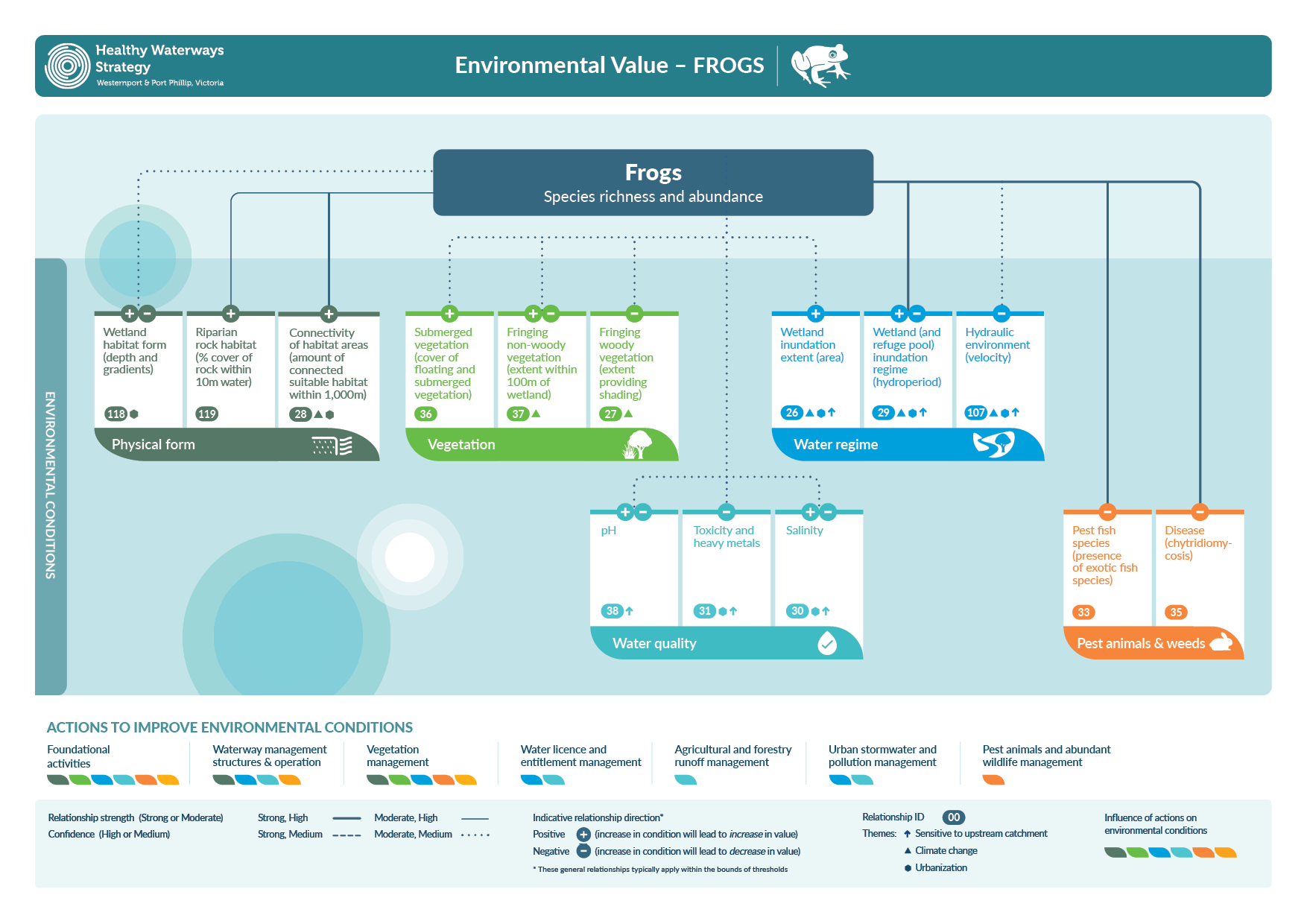
Download the Frogs conceptual model (PDF 355 KB)
More information on the conceptual models can be found in the Healthy Waterways Strategy Resource Document.
Changes in waterway conditions can have a big impact on frogs
The conditions that influence frogs are described below. Some of the more important ones are monitored over time so that we can track whether actions taken in the strategy are leading to improvement.
Physical form
The size and diversity of billabongs and wetlands is important for supporting large numbers of different frog species. Some frog species thrive in shallow wetlands with low, sloping banks, while others prefer deeper ponds with steeper banks. Rocks in and around wetlands are also important in providing sites for basking as well as foraging habitat and refuge sites.
Physical form is considered under the habitat condition. See waterway conditions - habitat to see how physical form is monitored.
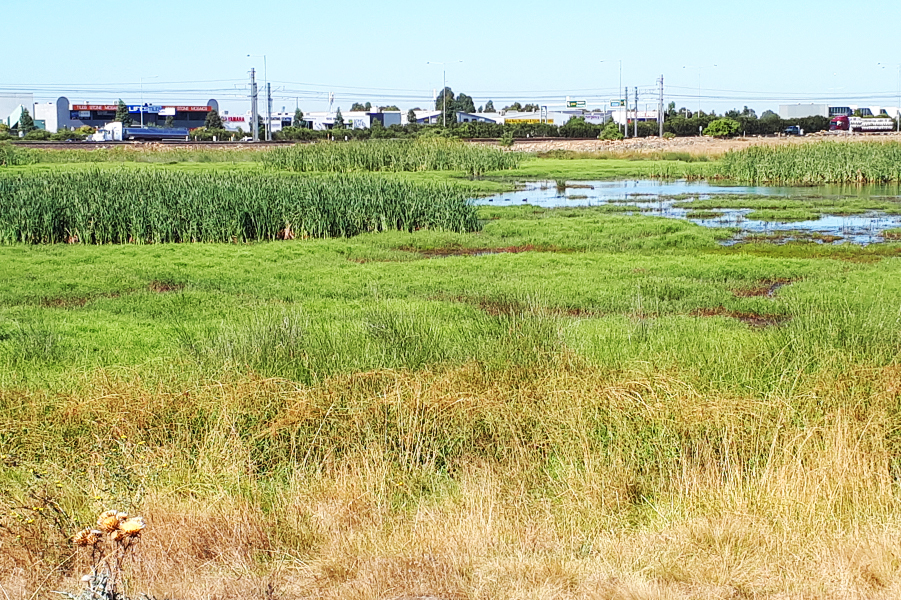
2020 Case study: Protecting our natural wetlands from urban growth
The 2019 Healthy Waterways Strategy Annual Report highlighted natural wetlands as being particularly vulnerable to impacts of urbanisation. Work has begun to highlight the issue more broadly and improve existing planning, policy and regulatory setting to improve protections.
Vegetation
Aquatic vegetation provides shelter for adult frogs and structures for biofilms and organic matter to grow on that provide food sources for tadpoles. The presence of shallow vegetated areas, logs and coarse woody debris also provides habitat diversity and shelter from fish and other predators. However, too much shading can reduce basking opportunities and cool water temperatures, which have a negative impact on some frog species.
See waterway conditions - vegetation for more details on how these conditions are monitored.
Water quality
Heavy metals and pollutants that runoff into streams and wetlands from urban, industrial and rural areas have a negative impact on frogs. Some species, such as the Growling Grass Frog, live in wetlands with relatively high salinities. However, most species of frog require freshwater.
See waterway conditions water quality and stormwater for more details on how these conditions are monitored.
Water regime
The wetting and drying regime of a wetland is important. The still and/or slow-flowing waters and moist conditions of wetlands provide breeding habitat for frogs, insect food resources and aquatic vegetation as a source of food and shelter. Fast-flowing water can detach eggs and relocate tadpoles, so most frogs prefer wetlands or slow flowing areas of streams.
Water needs to be present at the right time of year to support breeding but periods when the wetland is dry can be advantageous in controlling pest fish species and counteract the build-up of pathogens, parasites and predators that can occur at permanent wetlands. Urbanisation around natural wetlands can impact frogs by changing the water regime and the connectivity between wetland complexes.
See waterway conditions water for the environment and stormwater for more details on how these conditions are monitored.
Pest animals and disease
Exotic fish species such as carp and gambusia have a significant effect on frogs through preying on frog eggs and tadpoles. Frogs can also be impacted by Amphibian Chytrid Fungus, a potentially deadly fungus that can be mitigated through factors such as water temperature and salinity. Pest animals such as deer can impact threatened frog species habitat. Deer destroy the shallow wet depressions used by Pseudophryne during breeding through wallowing and trampling.
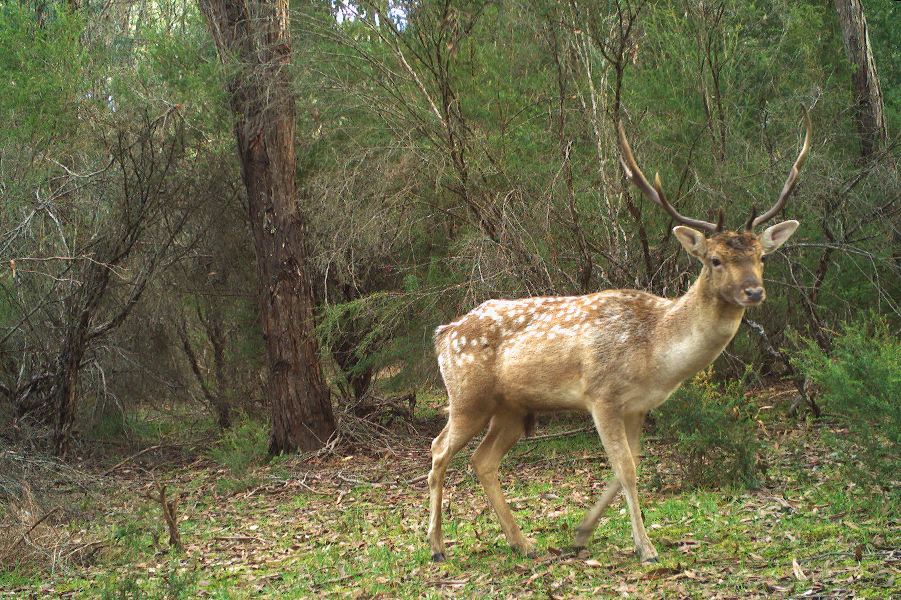
2020 Case study: Putting the spotlight on deer control
Deer are a key threat to native vegetation and critical habitat across the region. Modelling to predict deer density and monitoring vegetation recovery will provide critical information to help protect high value areas.
Actions that improve the condition of waterways for frogs
There are a range of actions that can improve the health of frogs and performance objectives are tracked annually. More information on how the strategy progress is being tracked can be found in the Report Card.
Mitigate threats to physical form
Improving habitat conditions for frogs includes protecting existing wetland habitat areas and investigating areas for new habitat. This can be done through planning controls to maintain wetland areas and buffers, and by constructing new wetland habitat such as reinstating billabongs and meanders. Bank stabilisation, installation of large wood or rocks and stock exclusion can all enhance existing frog habitat. Underpasses or bridges instead of ground-level roads can also help retain wetland connectivity.
In the Strategy actions such as installation of additional rocks and large woody debris at key wetlands will support frogs.
Establish buffers and maintain vegetation quality
Revegetation of habitat corridors and wetland buffer zones can enhance the habitat available for frogs. Fencing out stock and deer prevent trampling and pugging of critical frog habitat. Sometimes natural regeneration of vegetation by supporting improved flow regimes is the most effective way of supporting frog values in wetlands.
In the Strategy, actions such as providing grants to private and public land holders for fencing and revegetation to improve wetland buffer extent will support frogs.
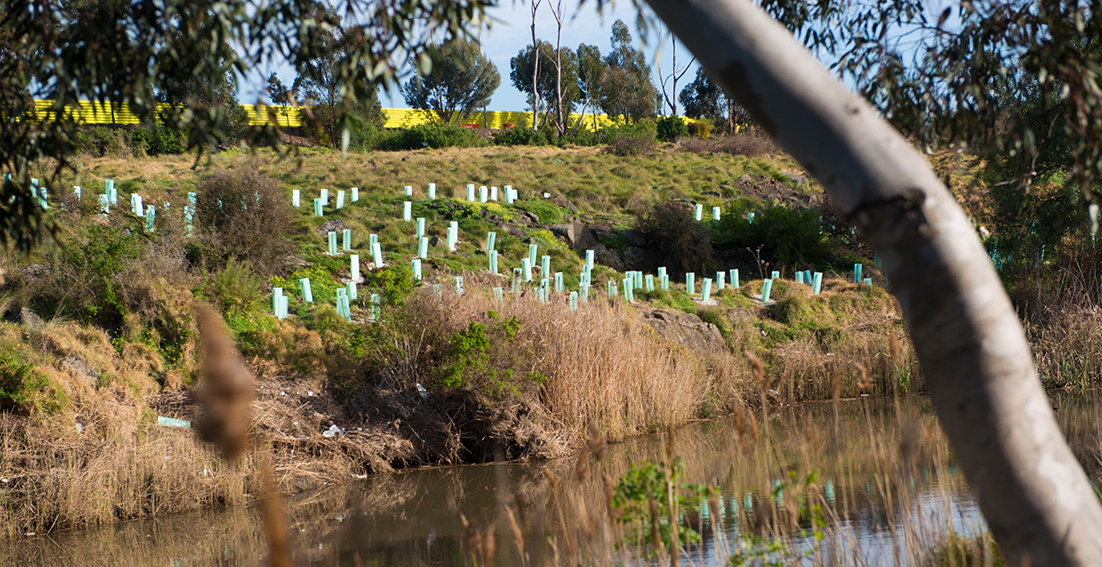
Improve water for the environment
Improving the water regime for frogs involves maintaining or improving flow conditions including overbank flows to provide water into wetlands and floodplain depressions. This water also needs to be of good quality and not frequent or deep enough to attract exotic fish species.
In the Strategy, actions such as the delivery of environmental flows to support billabong watering will support a range of values including frog breeding.
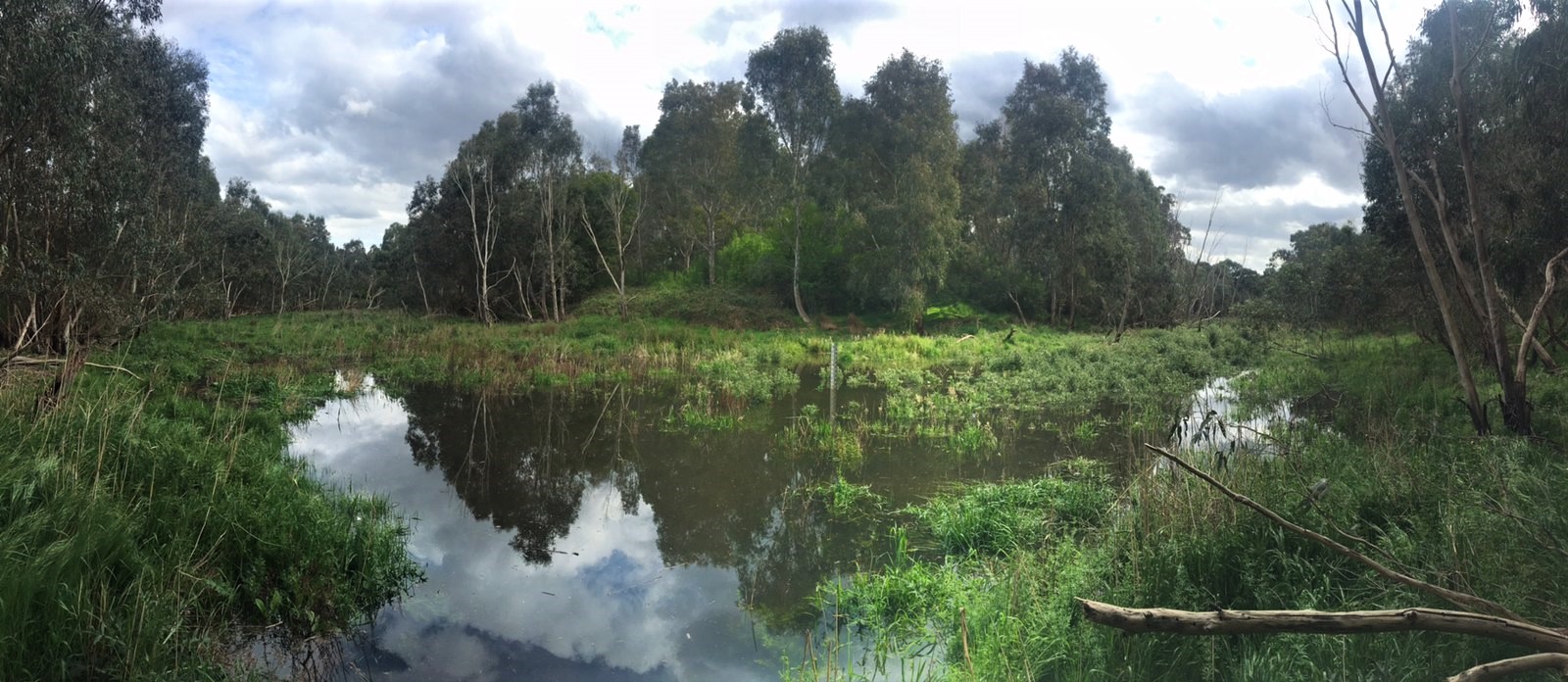
2020 Case study: Improving the management of billabongs in the lower Yarra using three-dimensional imagery
The mapping of billabongs in the lower Yarra using three dimensional imagery will improve how we target actions to achieve the best ecological, social and cultural value outcomes.
Improve water quality
Urban stormwater and pollution management along with agricultural runoff management can improve water quality conditions for frogs. This includes identifying sources of pollution, disconnecting frog wetland habitat from stormwater, and establishing wetland vegetation buffers.
In the Strategy, actions such as reducing nutrients and sediments from rural land and implementing stormwater management upstream of priority wetlands will support frogs. It also includes maintaining habitat assets built for key species such as growling grass frog so that water quality requirement as met.
Manage pest animals
Implementing management regimes to control exotic fish, introduced predators, weeds and deer will support frog values.
In the Strategy, actions such as manipulating the inundation frequency of some wetlands to control invasive fish species and the targeted control of deer will support frogs.
Engage communities
Supporting community groups and citizen science programs to promote the value of frogs in the community improves waterway literacy and increases participation in activities that protect waterways.
In the Strategy, actions such as increasing participation in citizen science programs like Frog Census improve awareness and public support for other actions to protect and improve frogs.
